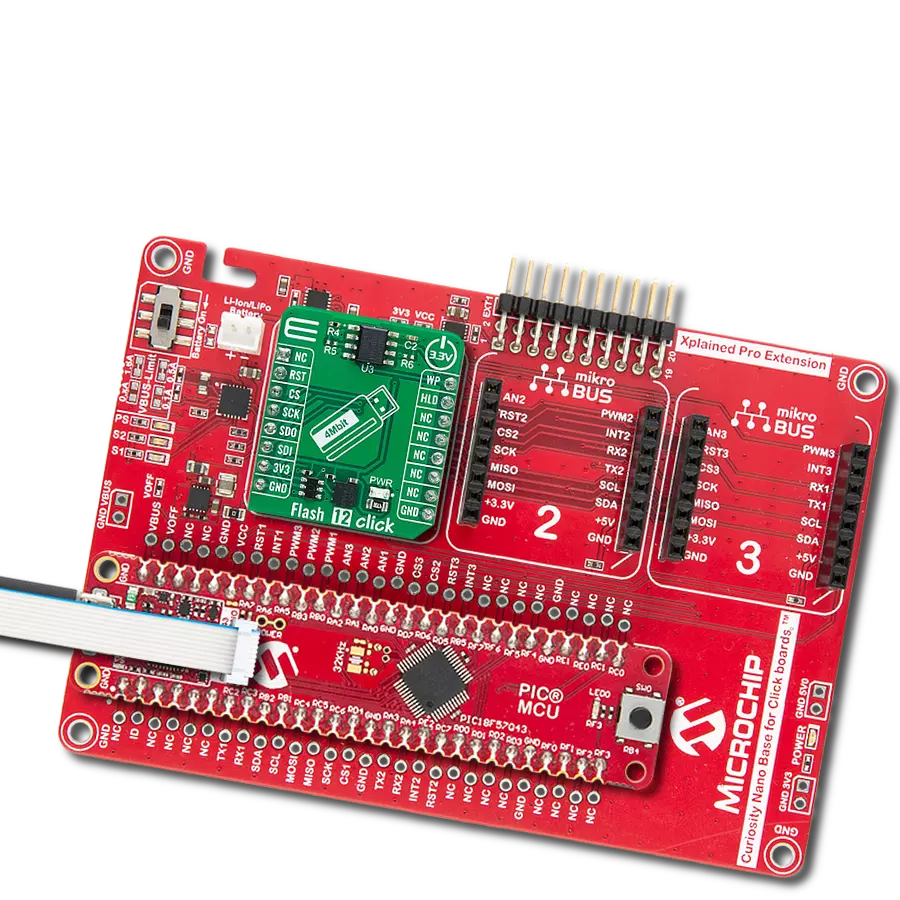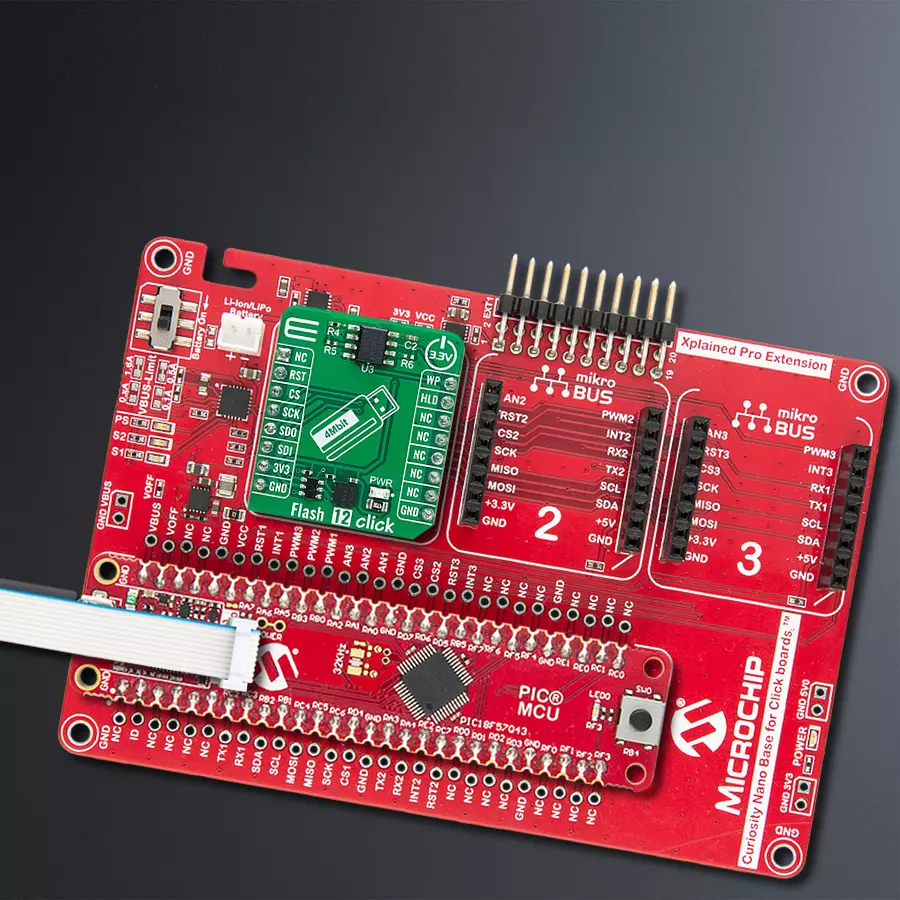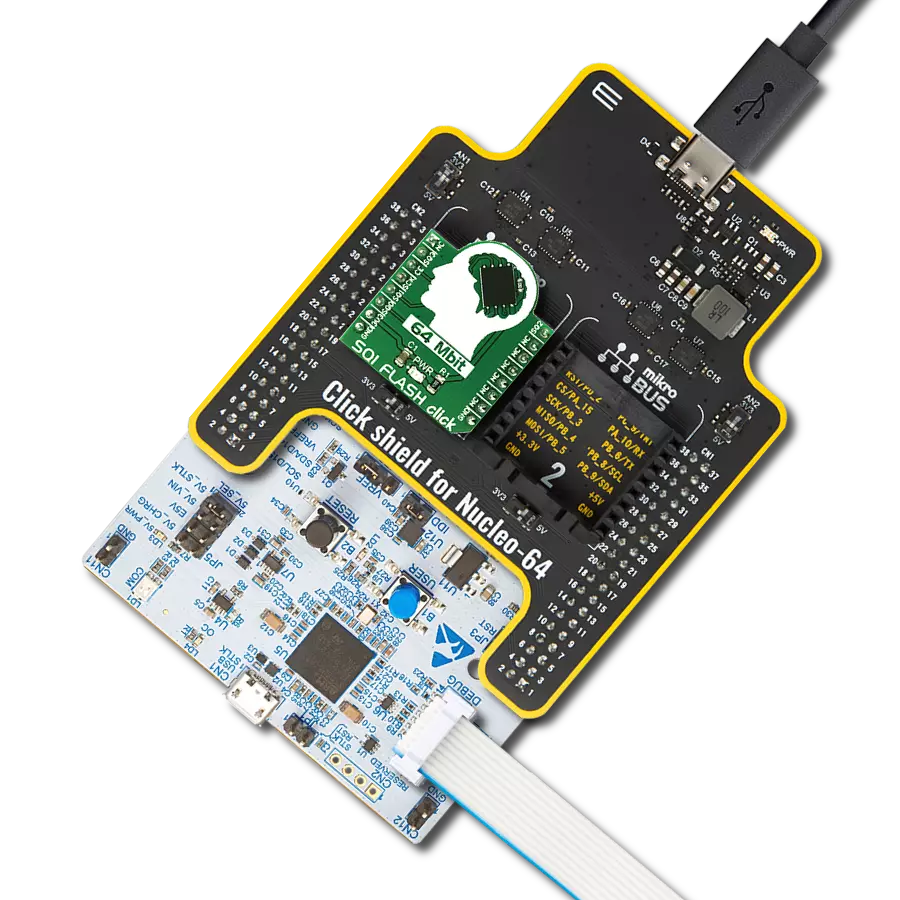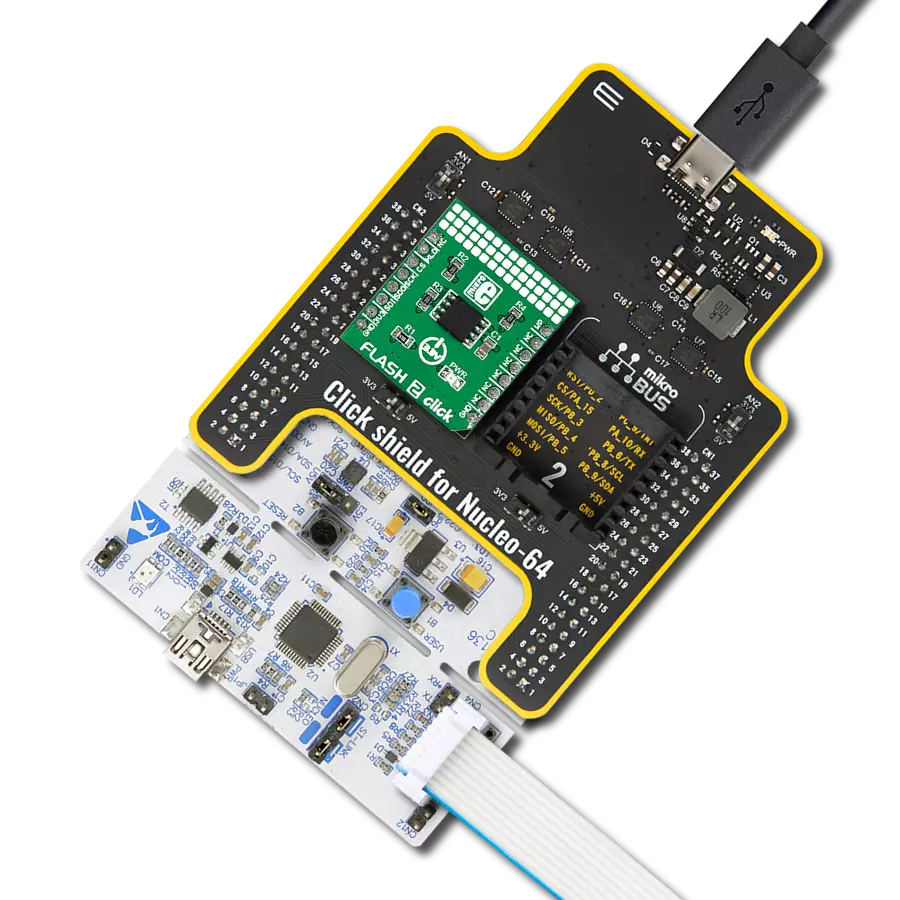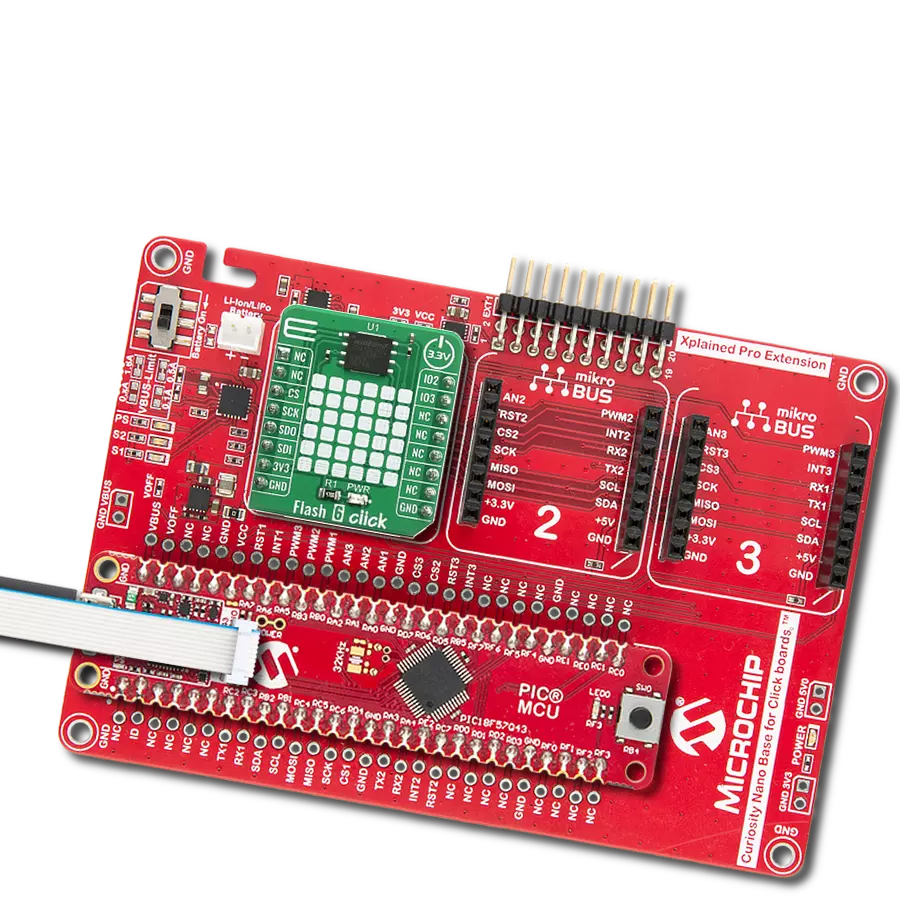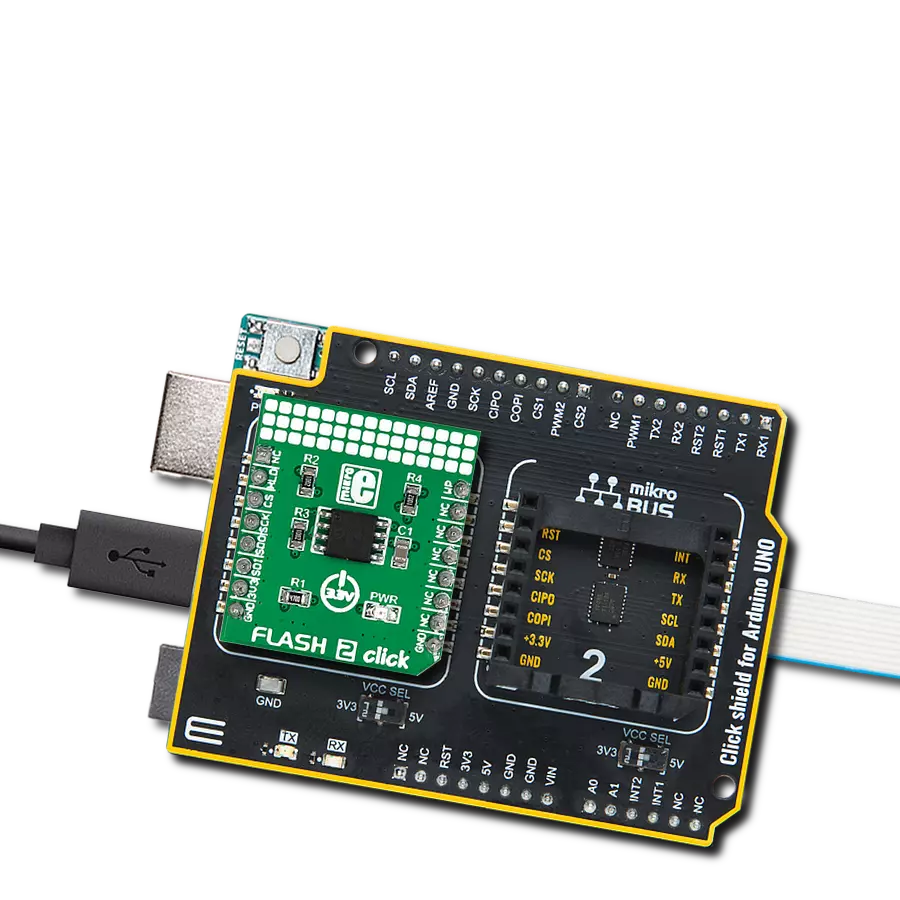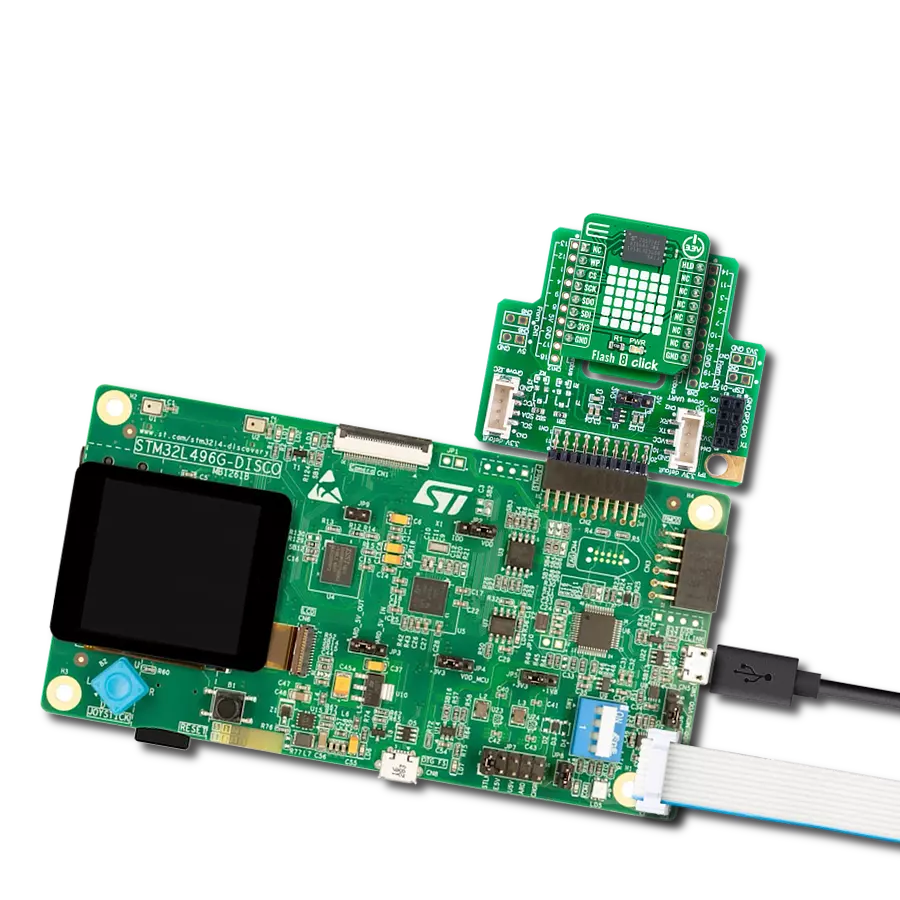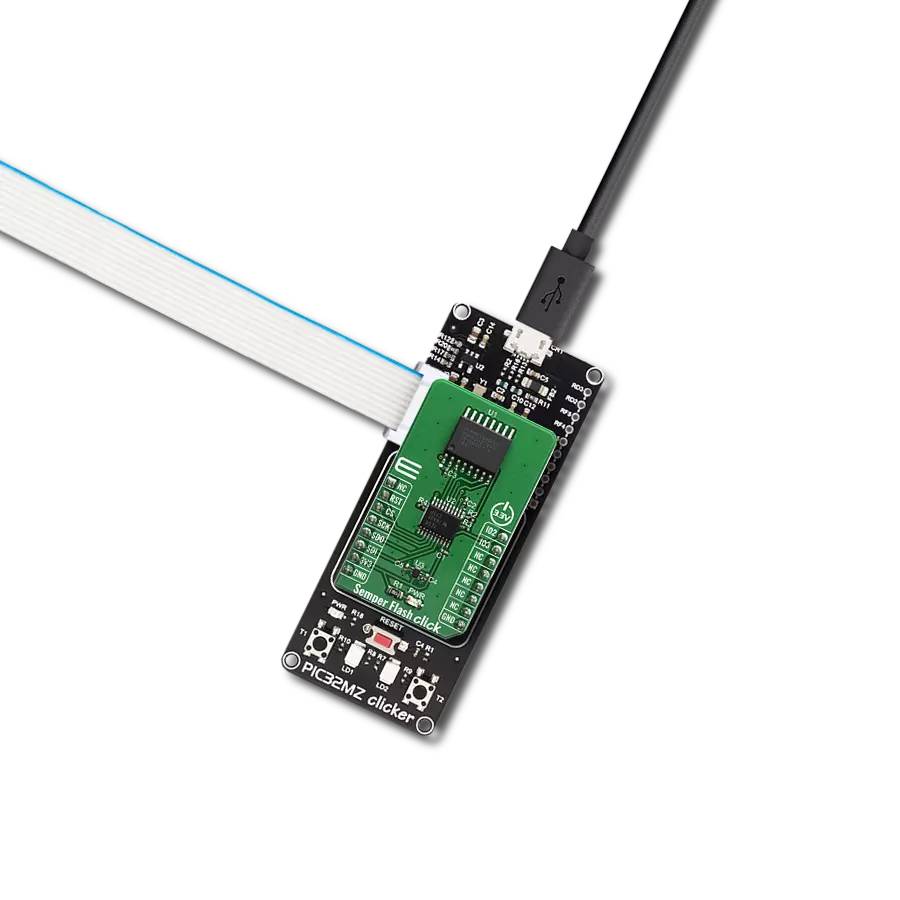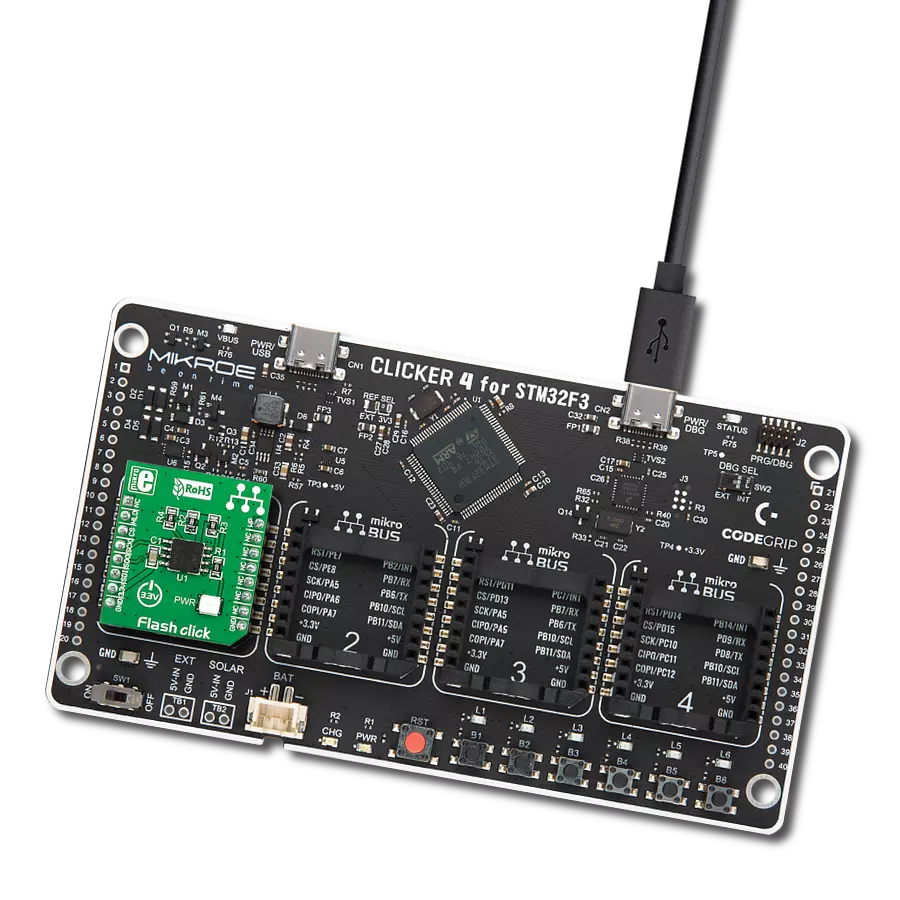Ultra-low power consumption, fast erase times, and the ability to execute code directly from memory makes it an excellent choice for developers looking to optimize their projects for the edge of IoT networks
A
A
Hardware Overview
How does it work?
Flash 12 Click is based on the AT25EU0041A, a 4Mbit serial flash memory from Renesas, known for its ultra-low power consumption. This memory is part of a series specifically developed for applications operating on the IoT network's fringes, where energy efficiency is paramount. The AT25EU0041A is particularly well-suited for battery-operated systems, offering a reliable solution for both program code storage, which is then loaded into embedded systems, and serving as external RAM for direct program execution from the NOR Flash memory. Based on these features, this Click board™ is ideal for various applications from low-power reading and rapid erasure to boot/code shadow memory and straightforward event/data logging. The AT25EU0041A sets a new standard in energy efficiency through its innovative erase architecture, which features short erase times while maintaining low power consumption across all
operations, including reading, programming, and erasing. The consistent erase times, irrespective of the memory block size, and a page-erase capability that allows for as little as 256 bytes to be erased enhance the efficiency of write operations. Moreover, the AT25EU0041A adheres to the JEDEC standard for manufacturer and device identification, and it includes a 128-bit unique serial number, further enhancing its utility and security features. Flash 12 Click communicates with MCU through a standard SPI interface supporting the two most common SPI modes, SPI Mode 0 and 3, and a maximum clock frequency of up to 108MHz. The AT25EU0041A enhances data transfer rates through Dual and Quad SPI operations, which double and quadruple the standard SPI speed, respectively. These enhanced speeds are achieved by re-purposing the SI and SO pins as bidirectional I/O pins during Dual and Quad SPI operations.
Furthermore, the board features a HOLD function, marked as HLD and routed on the default position of the INT pin of the mikroBUS™ socket. The hold function allows the suspension of serial communications without disrupting ongoing operations. The board also has a Write Protect feature, marked as WP and routed on the default position of the PWM of the mikroBUS™ socket, that safeguards all registers and memory from unintended write operations through both hardware and software mechanisms. This Click board™ can be operated only with a 3.3V logic voltage level. The board must perform appropriate logic voltage level conversion before using MCUs with different logic levels. Also, it comes equipped with a library containing functions and an example code that can be used as a reference for further development.
Features overview
Development board
PIC18F57Q43 Curiosity Nano evaluation kit is a cutting-edge hardware platform designed to evaluate microcontrollers within the PIC18-Q43 family. Central to its design is the inclusion of the powerful PIC18F57Q43 microcontroller (MCU), offering advanced functionalities and robust performance. Key features of this evaluation kit include a yellow user LED and a responsive
mechanical user switch, providing seamless interaction and testing. The provision for a 32.768kHz crystal footprint ensures precision timing capabilities. With an onboard debugger boasting a green power and status LED, programming and debugging become intuitive and efficient. Further enhancing its utility is the Virtual serial port (CDC) and a debug GPIO channel (DGI
GPIO), offering extensive connectivity options. Powered via USB, this kit boasts an adjustable target voltage feature facilitated by the MIC5353 LDO regulator, ensuring stable operation with an output voltage ranging from 1.8V to 5.1V, with a maximum output current of 500mA, subject to ambient temperature and voltage constraints.
Microcontroller Overview
MCU Card / MCU

Architecture
PIC
MCU Memory (KB)
128
Silicon Vendor
Microchip
Pin count
48
RAM (Bytes)
8196
You complete me!
Accessories
Curiosity Nano Base for Click boards is a versatile hardware extension platform created to streamline the integration between Curiosity Nano kits and extension boards, tailored explicitly for the mikroBUS™-standardized Click boards and Xplained Pro extension boards. This innovative base board (shield) offers seamless connectivity and expansion possibilities, simplifying experimentation and development. Key features include USB power compatibility from the Curiosity Nano kit, alongside an alternative external power input option for enhanced flexibility. The onboard Li-Ion/LiPo charger and management circuit ensure smooth operation for battery-powered applications, simplifying usage and management. Moreover, the base incorporates a fixed 3.3V PSU dedicated to target and mikroBUS™ power rails, alongside a fixed 5.0V boost converter catering to 5V power rails of mikroBUS™ sockets, providing stable power delivery for various connected devices.
Used MCU Pins
mikroBUS™ mapper
Take a closer look
Click board™ Schematic
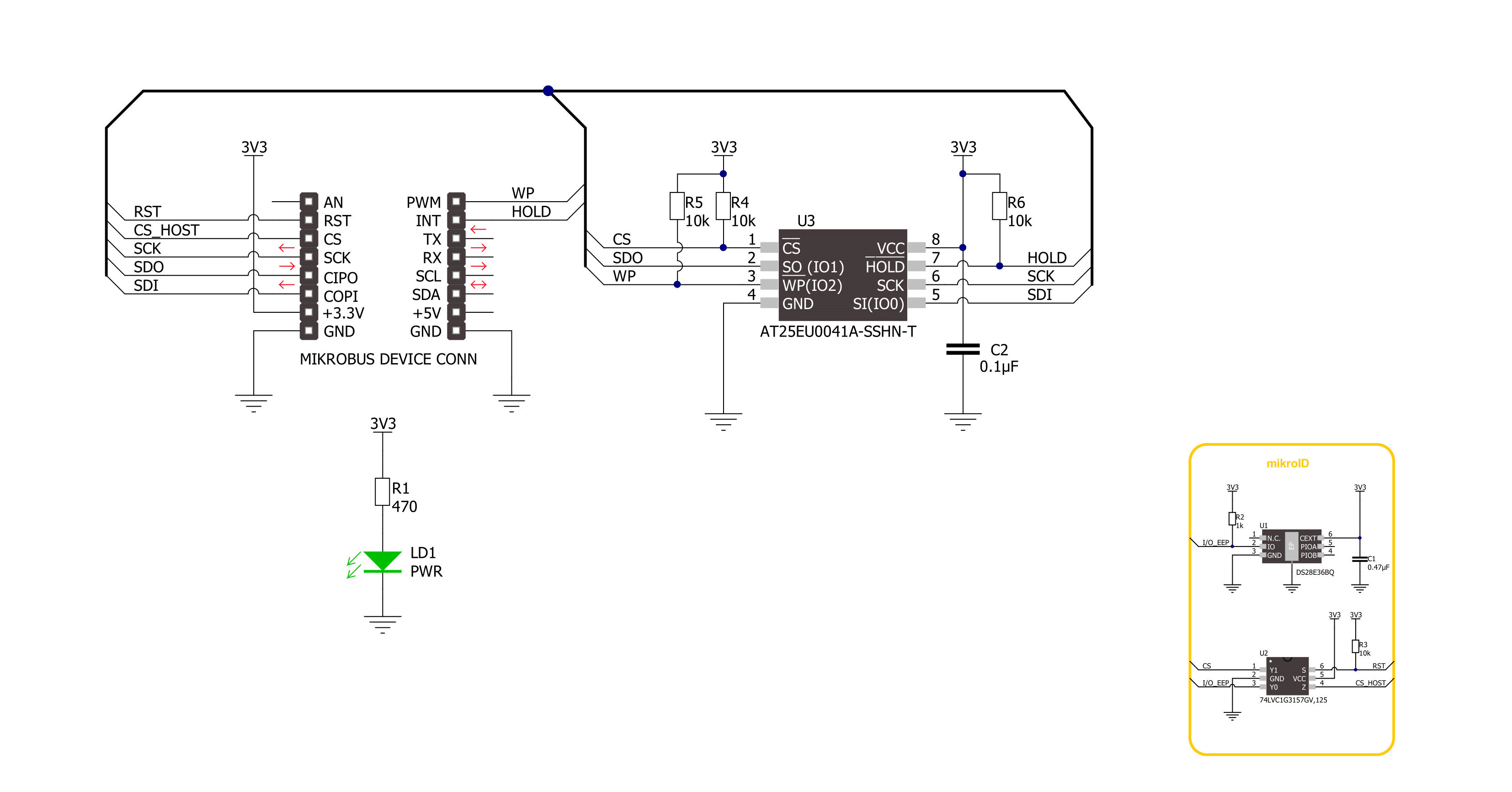
Step by step
Project assembly
Software Support
Library Description
This library contains API for Flash 12 Click driver.
Key functions:
flash12_memory_write- This function writes a desired number of data bytes starting to the selected memory address by using SPI serial interfaceflash12_memory_read- This function reads a desired number of data bytes starting from the selected memory address by using SPI serial interfaceflash12_erase_memory- This function erases the selected amount of memory which contains the selected address
Open Source
Code example
The complete application code and a ready-to-use project are available through the NECTO Studio Package Manager for direct installation in the NECTO Studio. The application code can also be found on the MIKROE GitHub account.
/*!
* @file main.c
* @brief Flash 12 Click example
*
* # Description
* This example demonstrates the use of Flash 12 Click board
* by writing specified data to the memory and reading it back.
*
* The demo application is composed of two sections :
*
* ## Application Init
* The initialization of SPI module and log UART.
* After driver initialization, the app sets the default configuration.
*
* ## Application Task
* The demo application writes a desired number of bytes to the memory
* and then verifies if it is written correctly by reading
* from the same memory location and displaying the memory content.
* Results are being sent to the UART Terminal, where you can track their changes.
*
* @author Nenad Filipovic
*
*/
#include "board.h"
#include "log.h"
#include "flash12.h"
// Starting memory address
#define STARTING_ADDRESS 0x012345
// Demo text messages
#define DEMO_TEXT_MESSAGE_1 "MikroE"
#define DEMO_TEXT_MESSAGE_2 "Flash 12 Click"
static flash12_t flash12;
static log_t logger;
void application_init ( void )
{
log_cfg_t log_cfg; /**< Logger config object. */
flash12_cfg_t flash12_cfg; /**< Click config object. */
/**
* Logger initialization.
* Default baud rate: 115200
* Default log level: LOG_LEVEL_DEBUG
* @note If USB_UART_RX and USB_UART_TX
* are defined as HAL_PIN_NC, you will
* need to define them manually for log to work.
* See @b LOG_MAP_USB_UART macro definition for detailed explanation.
*/
LOG_MAP_USB_UART( log_cfg );
log_init( &logger, &log_cfg );
log_info( &logger, " Application Init " );
// Click initialization.
flash12_cfg_setup( &flash12_cfg );
FLASH12_MAP_MIKROBUS( flash12_cfg, MIKROBUS_1 );
if ( SPI_MASTER_ERROR == flash12_init( &flash12, &flash12_cfg ) )
{
log_error( &logger, " Communication init." );
for ( ; ; );
}
if ( FLASH12_ERROR == flash12_default_cfg ( &flash12 ) )
{
log_error( &logger, " Default configuration." );
for ( ; ; );
}
log_info( &logger, " Application Task\r\n" );
}
void application_task ( void )
{
uint8_t data_buf[ 128 ] = { 0 };
log_printf( &logger, " Memory address: 0x%.6LX\r\n", ( uint32_t ) STARTING_ADDRESS );
if ( FLASH12_OK == flash12_erase_memory( &flash12, FLASH12_CMD_BLOCK_ERASE_4KB, STARTING_ADDRESS ) )
{
log_printf( &logger, " Erase memory block (4KB)\r\n" );
}
memcpy( data_buf, DEMO_TEXT_MESSAGE_1, strlen( DEMO_TEXT_MESSAGE_1 ) );
if ( FLASH12_OK == flash12_memory_write( &flash12, STARTING_ADDRESS,
data_buf,
sizeof( data_buf ) ) )
{
log_printf( &logger, " Write data: %s\r\n", data_buf );
Delay_ms ( 100 );
}
memset( data_buf, 0, sizeof( data_buf ) );
if ( FLASH12_OK == flash12_memory_read( &flash12, STARTING_ADDRESS,
data_buf,
sizeof( data_buf ) ) )
{
log_printf( &logger, " Read data: %s\r\n\n", data_buf );
Delay_ms ( 1000 );
Delay_ms ( 1000 );
Delay_ms ( 1000 );
}
log_printf( &logger, " Memory address: 0x%.6LX\r\n", ( uint32_t ) STARTING_ADDRESS );
if ( FLASH12_OK == flash12_erase_memory( &flash12, FLASH12_CMD_BLOCK_ERASE_4KB, STARTING_ADDRESS ) )
{
log_printf( &logger, " Erase memory block (4KB)\r\n" );
}
memcpy( data_buf, DEMO_TEXT_MESSAGE_2, strlen( DEMO_TEXT_MESSAGE_2 ) );
if ( FLASH12_OK == flash12_memory_write( &flash12, STARTING_ADDRESS,
data_buf, sizeof( data_buf ) ) )
{
log_printf( &logger, " Write data: %s\r\n", data_buf );
Delay_ms ( 100 );
}
memset( data_buf, 0, sizeof ( data_buf ) );
if ( FLASH12_OK == flash12_memory_read( &flash12, STARTING_ADDRESS,
data_buf, sizeof ( data_buf ) ) )
{
log_printf( &logger, " Read data: %s\r\n\n", data_buf );
Delay_ms ( 1000 );
Delay_ms ( 1000 );
Delay_ms ( 1000 );
}
}
int main ( void )
{
/* Do not remove this line or clock might not be set correctly. */
#ifdef PREINIT_SUPPORTED
preinit();
#endif
application_init( );
for ( ; ; )
{
application_task( );
}
return 0;
}
// ------------------------------------------------------------------------ END
Additional Support
Resources
Category:FLASH
